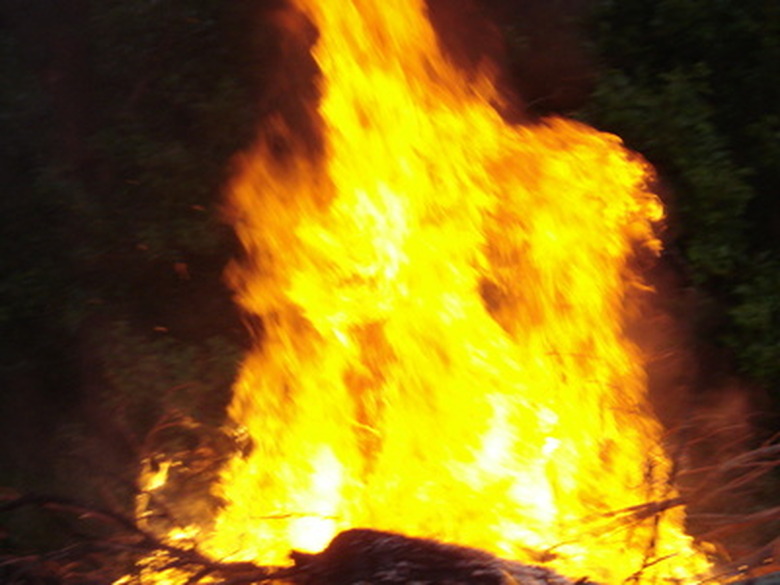How To Know If A Substance Is A Reducing Agent Or A Oxidizing Agent By The Periodic Table?
Chemists keep track of how electrons are transferred between atoms in a reaction using an oxidation number. If the oxidation number of an element in the reaction increases or becomes less negative, the element has been oxidized, while a decreased or more negative oxidation number means the element has been reduced. (You can remember this distinction using an old mnemonic: OIL RIG, oxidation is loss, reduction is gain.) An oxidizing agent oxidizes another species and is reduced in the process, while a reducing agent reduces another species and is oxidized in the process.
Step 1
Write out the formula for the chemical reaction. The formula for the combustion of propane, for example, is C3H8(g) + 5 O2 –> 3 CO2(g) + 4 H2O(l) . Make sure the equation is balanced properly.
Step 2
Assign an oxidation number to each element in the reaction using the following rules: Any element by itself (i.e. not combined with any other elements) has an oxidation number of 0. O2 or pure oxygen, for example, has an oxidation number of 0 since it is an element by itself. Fluorine is the most electronegative element (i.e. it exerts the strongest pull on electrons), so in a compound it always has an oxidation number of -1. Since it's the second most electronegative element, oxygen in a compound always has an oxidation number of -2 (with only a few exceptions). Hydrogen has an oxidation number of -1 when combined with a metal and +1 when combined with a nonmetal. When combined with other elements, halogens (group 17 of the periodic table) have an oxidation number of -1 unless combined with oxygen or a halogen higher in the group, in which case they have an oxidation number of +1. When combined with other elements, group 1 metals have an oxidation number of +1, while group 2 metals have an oxidation number of +2. The sum of all oxidation numbers in a compound or ion must be equal to the net charge of the compound or ion. The sulfate anion, SO4, for example, has a net charge of -2, so the sum of all oxidation numbers in the compound must be equal to -2.
Step 3
Compare the oxidation numbers for each element on the product side with the oxidation number on the reactant side. If the oxidation number of a species decreases or becomes more negative, the species has been reduced (i.e. gained electrons). If the oxidation number of a species increases or becomes more positive, it has been oxidized (i.e. lost electrons). In the combustion of propane, for example, the oxygen atoms begin the reaction with an oxidation number of 0 and end it with an oxidation number of -2 (using the above rules, oxygen in H2O or in CO2 has an oxidation number of -2). Consequently, oxygen is reduced when it reacts with propane.
Step 4
Determine which reactants are reduced and which are oxidized as shown above. A reactant that oxidizes an element in another reactant is an oxidizing agent, while a reactant that reduces an element in another reactant is a reducing agent. In the combustion reaction between propane and oxygen, for example, oxygen is the oxidizing agent and propane is the reducing agent.
Step 5
Note that the same substance could be a reducing agent in one reaction and an oxidizing agent in another. Some compounds or substances readily lose electrons, however, and thus are generally classified as reducing agents, while other compounds are very good at taking electrons or transferring oxygen atoms and thus are generally classified as oxidizing agents. Which role a substance plays will still depend on the reaction in question.
Things Needed
- Periodic table
- Pencil
- Paper
TL;DR (Too Long; Didn't Read)
It may take a little practice to familiarize yourself with rules for assigning oxidation numbers; try assigning oxidation numbers for elements in different compounds until you have it down.
References
- "Chemical Principles, the Quest for Insight, 4th Edition"; Peter Atkins and Loretta Jones; 2008.
Cite This Article
MLA
Brennan, John. "How To Know If A Substance Is A Reducing Agent Or A Oxidizing Agent By The Periodic Table?" sciencing.com, https://www.sciencing.com/substance-oxidizing-agent-periodic-table-6832790/. 24 April 2017.
APA
Brennan, John. (2017, April 24). How To Know If A Substance Is A Reducing Agent Or A Oxidizing Agent By The Periodic Table?. sciencing.com. Retrieved from https://www.sciencing.com/substance-oxidizing-agent-periodic-table-6832790/
Chicago
Brennan, John. How To Know If A Substance Is A Reducing Agent Or A Oxidizing Agent By The Periodic Table? last modified March 24, 2022. https://www.sciencing.com/substance-oxidizing-agent-periodic-table-6832790/
